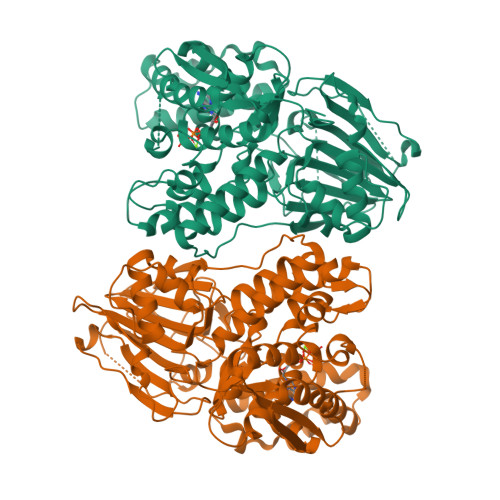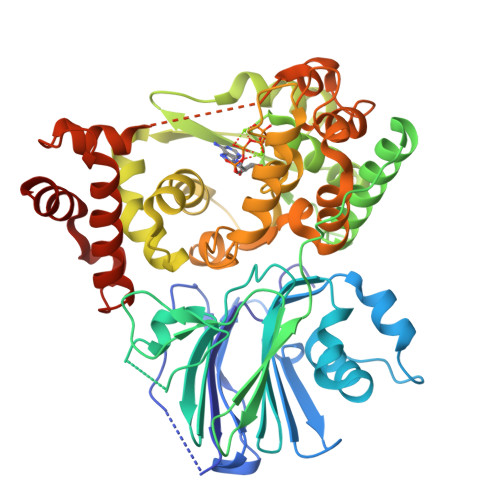The catalytic cycle of beta -lactam synthetase observed by x-ray crystallographic snapshots
Miller, M.T., Bachmann, B.O., Townsend, C.A., Rosenzweig, A.C.(2002) Proc Natl Acad Sci U S A 99: 14752-14757
- PubMed: 12409610
- DOI: https://doi.org/10.1073/pnas.232361199
- Primary Citation of Related Structures:
1M1Z, 1MB9, 1MBZ, 1MC1 - PubMed Abstract:
The catalytic cycle of the ATP/Mg(2+)-dependent enzyme beta-lactam synthetase (beta-LS) from Streptomyces clavuligerus has been observed through a series of x-ray crystallographic snapshots. Chemistry is initiated by the ordered binding of ATP/Mg(2+) and N(2)-(carboxyethyl)-l-arginine (CEA) to the apoenzyme. The apo and ATP/Mg(2+) structures described here, along with the previously described CEA.alpha,beta-methyleneadenosine 5'-triphosphate (CEA.AMP-CPP)/Mg(2+) structure, illuminate changes in active site geometry that favor adenylation. In addition, an acyladenylate intermediate has been trapped. The substrate analog N(2)-(carboxymethyl)-l-arginine (CMA) was adenylated by ATP in the crystal and represents a close structural analog of the previously proposed CEA-adenylate intermediate. Finally, the structure of the ternary product complex deoxyguanidinoproclavaminic acid (DGPC).AMP/PP(i)/Mg(2+) has been determined. The CMA-AMP/PP(i)/Mg(2+) and DGPC.AMP/PP(i)/Mg(2+) structures reveal interactions in the active site that facilitate beta-lactam formation. All of the ATP-bound structures differ from the previously described CEA.AMP-CPP/Mg(2+) structure in that two Mg(2+) ions are found in the active sites. These Mg(2+) ions play critical roles in both the adenylation and beta-lactamization reactions.
Organizational Affiliation:
Department of Biochemistry, Northwestern University, Evanston, IL 60208, USA.























